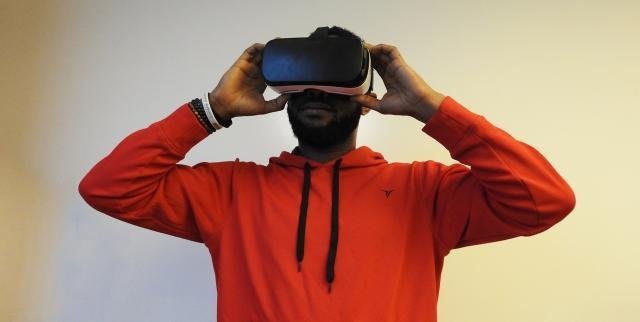Emerging Tech Trends: From Virtual Reality to Cryptocurrency
Technology continues to evolve at a breakneck pace, introducing groundbreaking innovations that are reshaping industries, economies, and everyday life. Among the most significant emerging tech trends today are Virtual Reality (VR) and Cryptocurrency. While these technologies have been around for some time, their rapid advancement and increasing integration into various sectors highlight their transformative potential. This article explores these two cutting-edge fields, their current state, and their future prospects.
Virtual Reality: A New Digital Frontier
Virtual Reality (VR) has transitioned from a niche concept in science fiction to a mainstream technology with widespread applications. It is an immersive, computer-generated environment that can simulate real or imagined experiences, allowing users to interact with the digital world in a highly engaging manner.
Evolution of Virtual Reality
VR technology dates back to the 1960s when early head-mounted displays (HMDs) were developed for military and research purposes. However, it wasn’t until the 1990s and early 2000s that commercial VR headsets started gaining traction. The launch of Oculus Rift in 2012 marked a turning point, leading to increased investments and developments in the field.
Applications of Virtual Reality
- Gaming and Entertainment
The gaming industry has been one of the biggest adopters of VR. Games like “Half-Life: Alyx” and “Beat Saber” provide users with fully immersive experiences, enhancing interactivity and realism. - Healthcare and Medicine
VR is revolutionizing healthcare by enabling advanced surgical simulations, medical training, and even pain management. For example, VR therapy is being used to treat phobias, PTSD, and anxiety disorders. - Education and Training
VR enhances learning experiences by allowing students to explore historical sites, conduct virtual science experiments, or practice skills in simulated environments. Medical and military training programs also utilize VR to simulate real-life scenarios. - Real Estate and Architecture
Virtual property tours and architectural visualization allow buyers and developers to explore properties remotely, improving decision-making and design accuracy. - Business and Collaboration
Companies are leveraging VR for remote work and collaboration, offering virtual meeting spaces where employees can interact as if they were in the same physical location.
Challenges and Future of VR
Despite its potential, VR faces several challenges, including high costs, motion sickness issues, and the need for more compelling content. However, with the development of wireless headsets, improved graphics, and AI-driven experiences, VR is expected to become more accessible and widely adopted in the coming years.
Cryptocurrency: The Future of Digital Finance
Cryptocurrency has emerged as a revolutionary force in the financial world, challenging traditional banking systems and offering decentralized digital transactions. Bitcoin, the first cryptocurrency, was introduced in 2009, and since then, thousands of digital currencies have been created, each with unique features and use cases.
How Cryptocurrency Works
Cryptocurrencies operate on blockchain technology, a decentralized and distributed ledger system that records all transactions securely. Unlike traditional currencies, cryptocurrencies are not controlled by any central authority, making them resistant to government interference and inflation.
Major Cryptocurrencies
- Bitcoin (BTC)
The first and most valuable cryptocurrency, Bitcoin is often referred to as digital gold due to its limited supply and store of value. - Ethereum (ETH)
Unlike Bitcoin, Ethereum allows for the creation of smart contracts and decentralized applications (DApps), making it a powerful platform for blockchain development. - Binance Coin (BNB)
Initially launched as a utility token for the Binance exchange, BNB has expanded its use in payments, transaction fees, and more. - Ripple (XRP)
Designed for fast and low-cost international transactions, Ripple is widely used by financial institutions for cross-border payments. - Cardano (ADA)
Known for its research-driven approach, Cardano aims to offer a scalable and sustainable blockchain platform.
Applications of Cryptocurrency
- Digital Payments
Cryptocurrencies enable instant, borderless transactions without the need for intermediaries, reducing transaction costs and processing times. - Decentralized Finance (DeFi)
DeFi platforms provide financial services like lending, borrowing, and trading without traditional banks, offering greater accessibility and transparency. - Non-Fungible Tokens (NFTs)
NFTs have revolutionized digital ownership, allowing artists, musicians, and creators to tokenize and sell their work on blockchain networks. - Supply Chain Management
Blockchain technology ensures transparency and security in supply chain tracking, reducing fraud and inefficiencies. - Remittances and Cross-Border Transfers
Cryptocurrencies provide a cheaper and faster alternative for sending money internationally, benefiting individuals in countries with unstable financial systems.
Challenges and Future of Cryptocurrency
While cryptocurrency offers numerous advantages, it also faces regulatory scrutiny, security risks, and market volatility. Governments worldwide are grappling with how to regulate digital assets while ensuring consumer protection. However, with increasing institutional adoption, advancements in blockchain scalability, and the rise of Central Bank Digital Currencies (CBDCs), the future of cryptocurrency remains promising.
The Convergence of VR and Cryptocurrency
Interestingly, VR and cryptocurrency are beginning to intersect in new and exciting ways. The rise of the metaverse—virtual worlds powered by blockchain and digital currencies—highlights how these technologies complement each other. Platforms like Decentraland and The Sandbox allow users to buy, sell, and trade virtual real estate using cryptocurrencies, creating entirely new digital economies.
Moreover, blockchain technology is being used to verify digital assets in VR environments, ensuring security and authenticity. As these technologies continue to develop, their integration could lead to even more innovative applications across industries.
Conclusion
Virtual Reality and Cryptocurrency represent two of the most exciting technological advancements of the modern era. While VR is revolutionizing how we interact with digital content, cryptocurrency is reshaping the financial landscape. Both technologies have challenges to overcome, but their potential to transform industries and everyday life is undeniable. As they continue to evolve, their convergence may pave the way for a future where digital experiences and decentralized finance become seamlessly intertwined.




